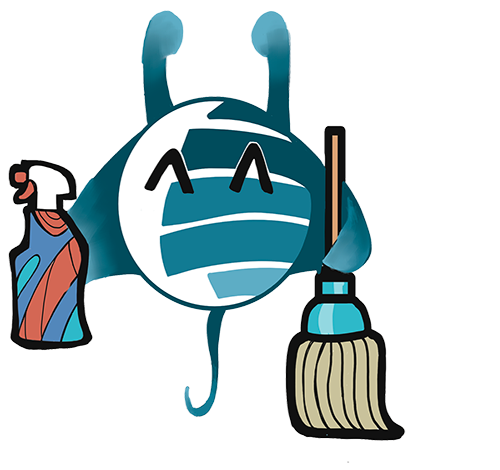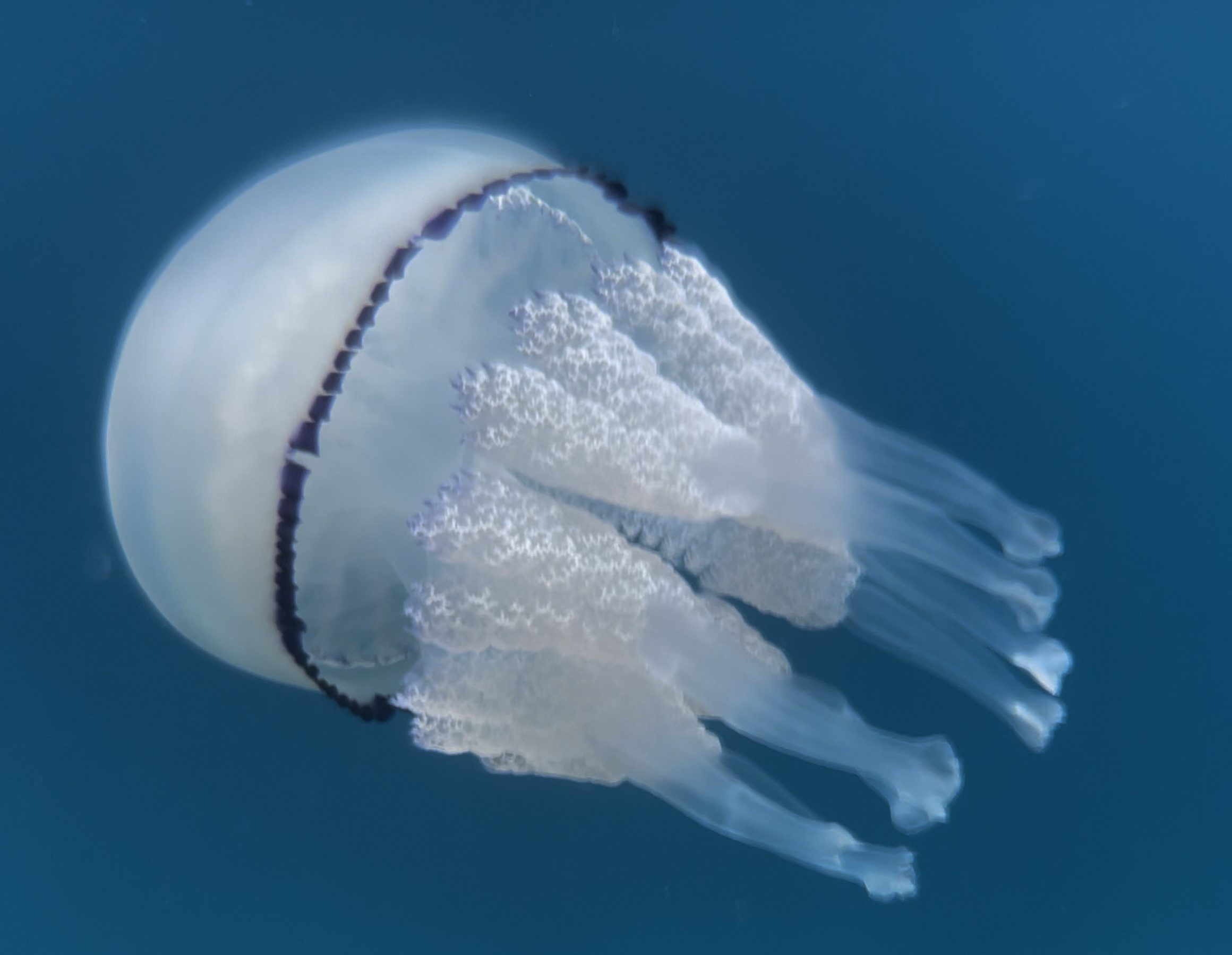It is the largest. But also the most harmless among jellyfish. The Barrel Jellyfish,
scientific name Rhizostoma pulmo, is endemic to the Mediterranean, but also lives in the Atlantic and the White Sea.
It is a pelagic organism, although it prefers shallow depths, or rather proximity to the surface, as well as the coast. Belonging to the class of Scyphozoa and the family of Rhizomastidae, the Barrel Jellyfish has a large umbrella, or the upper part of its body, which can measure sixty centimeters. With a semi-spherical shape, it is like a milky white dome edged with a violet blue, but in young specimens it is completely transparent. The part below the umbrella is called the handlebar and is composed of lumpy whitish extensions from which eight tentacles depart, the final part of which has the shape of a tricuspid club.
On the tentacles are the openings from which the jellyfish sucks in the plankton it feeds on. Food that it shares with the juveniles of some species of pelagic fish, such as the horse mackerel and the amberjack, which find shelter right between the tentacles. At the end of them are the tiny zooxanthellae algae with which it is in symbiosis. From the photosynthesis of those algae they obtain other nutritional elements.
The tentacles are the only moderately stinging part of the jellyfish's body, but this does not cause serious damage, only a short-term annoyance.
The Rhizostoma pulmo, like other jellyfish, represents a large and precious food reserve for cetaceans and numerous species of fish and is considered a bioindicator of the health of the sea and the creatures that populate it.




